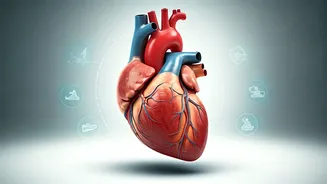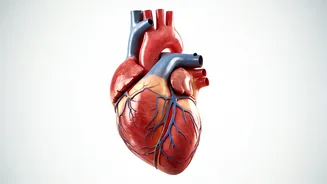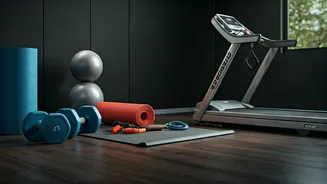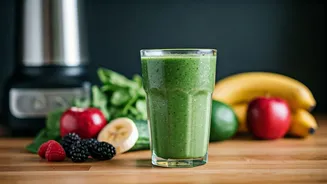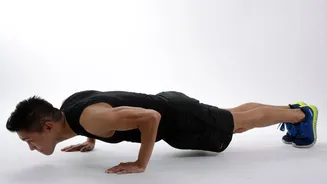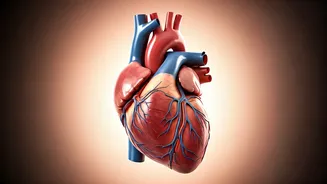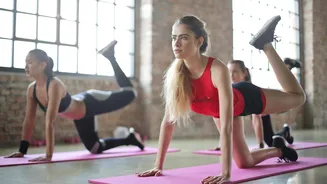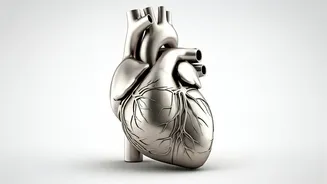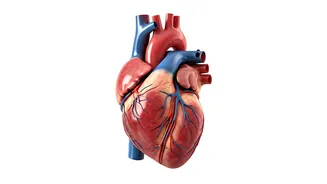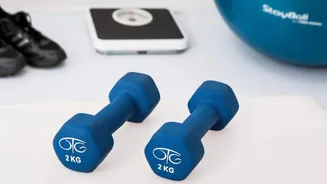Walking: Simple Steps
Walking is often underestimated, but it is a cornerstone of heart-healthy exercise. It's incredibly accessible; all you need is a comfortable pair of shoes.
Aim for at least 30 minutes of brisk walking most days of the week. This activity gets your heart pumping without putting excessive strain on your joints. Start with shorter walks if needed, gradually increasing the duration and intensity. Consider walking at a pace where you can talk but are slightly breathless. Embrace walking as a daily habit and feel the difference in your energy levels and cardiovascular health. Walking can be easily incorporated into your daily commute, lunch breaks, or evening routines. Vary your routes to keep things interesting and enjoy the simple pleasure of moving your body.
Swimming: Gentle Workout
Swimming is a fantastic exercise, especially for those with joint pain or other physical limitations. The buoyancy of water supports your body, reducing stress on your joints while still providing a full-body workout. Swimming works multiple muscle groups simultaneously, enhancing cardiovascular fitness. Even a leisurely swim for 20-30 minutes can offer significant benefits. Experiment with different strokes like freestyle, backstroke, or breaststroke to engage different muscles and keep your workouts engaging. Swimming also improves flexibility and coordination. The resistance of the water challenges your muscles without high-impact movements. Find a local pool and make swimming a regular part of your exercise routine. It's a great way to cool down, relieve stress, and boost your heart health.
Cycling: Low Impact
Cycling, whether on a stationary bike or outdoors, offers an excellent cardio workout while being gentle on your joints. It strengthens your leg muscles and improves cardiovascular health without the impact of running or jumping. Start with shorter rides at a moderate pace, gradually increasing the duration and resistance as you get fitter. Cycling is a highly adaptable exercise; you can adjust the intensity to match your fitness level. Road cycling allows you to explore your surroundings, while indoor cycling is a great option for any weather. Regular cycling improves your endurance, boosts your metabolism, and burns calories. Ensure your bike is properly fitted to prevent injuries and consider wearing a helmet for safety.
Yoga: Mind, Body Health
Yoga is a practice that combines physical postures, breathing techniques, and meditation, making it a holistic approach to heart health. Many yoga poses help improve flexibility, balance, and strength, contributing to overall physical well-being. Regular yoga practice can lower blood pressure, reduce stress, and improve mood, all of which benefit your heart. Look for yoga classes designed for all levels, and gradually increase the difficulty as your fitness improves. Even gentle yoga sessions can have a significant impact on your heart health. Yoga also enhances mindfulness, helping you to connect with your body and manage stress effectively. Incorporate yoga into your routine to boost both your physical and mental health.
Tai Chi: Gentle Motion
Tai Chi is a low-impact exercise known for its slow, flowing movements and deep breathing, making it beneficial for both your body and mind. It is a form of exercise that can improve your balance, flexibility, and coordination while also helping to reduce stress and improve heart health. The gentle movements in Tai Chi enhance blood circulation and lower blood pressure. It's a great option for people of all ages and fitness levels, and it can be easily practiced anywhere. Tai Chi promotes relaxation and mental clarity, which contributes to a healthier lifestyle. The practice can be done individually or in a group, making it adaptable to any schedule. Embrace the practice of Tai Chi for a serene yet powerful approach to maintaining heart health.
Elliptical: Cardio Machine
The elliptical trainer is a popular choice for a low-impact cardiovascular workout. It mimics the motion of running or walking without putting stress on your knees and ankles. Using an elliptical machine allows you to work both your upper and lower body simultaneously, maximizing your workout efficiency. Most elliptical trainers have adjustable resistance levels, allowing you to tailor the workout to your fitness level. Regular use can improve cardiovascular fitness, burn calories, and strengthen various muscle groups. Aim for 20-30 minutes of elliptical training several times a week, increasing the intensity as you get fitter. It's a convenient option for home workouts and can be easily incorporated into your fitness routine.
Water Aerobics: Aqua Fun
Water aerobics is an excellent way to get a great cardio workout while minimizing stress on your joints. The water supports your body weight, making it ideal for individuals with arthritis, joint pain, or other physical limitations. The resistance of the water adds to the intensity of the workout, helping to build strength and improve cardiovascular health. Water aerobics classes often involve various exercises, like walking, jogging, and arm movements, all performed in the water. Participating in water aerobics improves your flexibility, balance, and coordination. It's also a fun and social activity, making it a great way to stay motivated. Find a local pool and join a water aerobics class to enjoy the benefits of this low-impact exercise while having fun.
